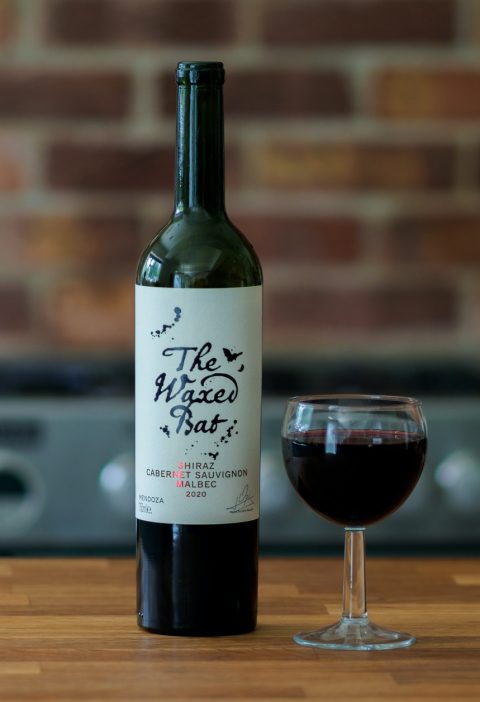
Depending on the type of red wine you are looking at, it is possible for it to last for a long time after it has been opened. The key to remember is to store it in a cool, dark place, cover it to slow down the oxidation process, and ferment it.
Store it in a cool, dark place
Keeping wine fresh can be easy if you know how to store it. It is important to store your red wine in a dark and cool spot. This will help prevent oxidation, which makes wine spoil faster. Whether you are storing your red wine in a refrigerator or freezer, keep the temperature at or below 70 degrees Fahrenheit. If your wine is exposed to light, it will oxidize more quickly, which can lead to an unpleasant vinegar-like taste.
Red wines are considered to be more sensitive than white wines because they contain higher levels of tannin. This is a substance that is naturally found in grape skins and stems. Tannins protect the wine from oxygenation, which helps to preserve its taste and aroma. When the bottle is opened, the tannins begin to break down. Once they have been broken down, the wine will lose its taste and flavor. However, it will still be safe to drink.
When a bottle of wine is opened, it is important to re-cork it as soon as possible. The cork is a good way to slow down the oxidation process. The acidity of the wine will also affect how long it will last after opening. A full-bodied red will last longer than a light red. For example, a rich Cabernet Sauvignon will stay fresh for much longer than a Pinot Noir.
The shelf life of a red wine will vary depending on the type of wine and how it is stored. Most red wines will stay fresh for about three to five days, but some will last longer. It is best to store open bottles in the refrigerator or freezer. It is also important to use a stopper to prevent air from coming into contact with the bottle. If you are going to re-cork a wine, make sure that it is sealed with a plastic wrap. This will also keep the cork from drying out.
When a bottle of wine is re-corked, it should be stored in a cool and dark place. If a cork is missing, it should be covered with foil. The cork should be pushed halfway into the bottle. It is best to store wine upright, which will reduce the amount of air contact with the wine. It is also important to avoid storing your red wine in a room with high temperatures, because the temperature will accelerate the oxidation process.
If you have an opened red wine that you do not plan to use right away, you can store it in the refrigerator. If you are living in a warm climate, you may choose to store it in the fridge. This will help to control the oxidation process and ensure that it is fresh. If you do not have a refrigerator, you can store it in an upright position in a cooler, dark location.
Cover it to slow the oxidation process
Keeping red wine fresh isn’t as difficult as you think. There are some simple steps you can take to ensure the best possible taste. You’ll want to store your wine in a cool, dark location and keep the temperature at a consistent level. You may also wish to invest in a dedicated refrigerator for your wine. This will help to maintain the temperature and help keep the bottle fresher for longer.
You’ll want to avoid exposing your red wine to the elements. Leaving it in a cupboard, for example, can leave it vulnerable to sunlight and heat. To prevent this from happening, you can wrap your bottle in plastic and place it in the fridge. If you prefer to drink your wine at room temperature, be sure to open it at least an hour before serving it. This will let you enjoy the wine without being exposed to any oxidants.
If you’re not in the mood to open your wine, you can still slow down the oxidation process by decanting it. Decanting is simple enough. Just loosen the cork and pop the cap back on the bottle. You can also wrap the bottle in plastic and then tightly seal it with a rubber band or other closure. This will not only give you the most control over the ambient temperature, but will also help to keep the wine fresher for longer.
For the most part, the scientifically correct way to keep your red wine fresh is to store it in the refrigerator. But, if you’re not in the mood to do this, you can try submerging the bottle in lukewarm water. It’s worth a try, but you’ll need to be careful not to overheat the bottle. This will also help to remove any oxidants and help to retain the aromas and flavors of the wine.
To really get the most out of your wine, you’ll need to find a balance between temperature and oxygen exposure. The optimal temperature range for storing red wine is 62-66 degF. You can achieve this by either opening the bottle, or placing it in the fridge for an hour or two before serving. If you’re planning on leaving your wine for longer than this, you’ll need to use a preservation device to help to keep the bottle fresh.
The best way to achieve the best tasting wine is to follow the advice given by some sommeliers: if you aren’t going to drink it in the next 24 hours, refrigerate it immediately. You’ll be surprised at the difference it can make. If you’re unable to refrigerate the bottle, you can put it in a cold box for a day or two, or simply let it ripen on your counter top for at least 12 hours.
Ferment it
Whether you’re making wine, drinking it or using it for cooking, there’s a lot to know about how long red wine lasts once fermented. There are many different factors that affect the shelf life of red wine, from the acid content to the tannins in the grapes. While each of these factors have a role in determining how long you can store red wine, there are a few common tips that will help you determine how to keep your red wine tasting fresh for longer.
The first thing you need to do is ensure that your red wine is stored in a cool place. Refrigerators work well for storing opened wine, but it’s also important to put the bottle in a dark, shady spot as well. If you want to put the bottle in the refrigerator, make sure to secure it with a cork. The cork will help prevent any air from getting into the bottle and contaminating the wine.
Once the bottle of wine is open, it begins to degrade, and the flavor and aromas will start to deteriorate. You should leave the bottle in a cool, dark place until you are ready to consume it. This means keeping the bottle in the fridge, or a cooler, but it is best to store the bottle in a chiller. If you choose to store the bottle in a cooler, make sure to keep the temperature low. The temperature will cause the wine to oxidize faster and lose its aromas and flavors.
Red wine usually has a shelf life of two to 10 years. How long your wine lasts depends on several factors, including its acid and tannin levels, its alcohol content, and its storage techniques. Some wines can last for months after they’ve been opened, while others have a shorter shelf life. However, the main factor affecting the shelf life of a bottle of red wine is the tannins in the grapes. The higher the level of tannins, the longer the wine will be able to keep its flavor and aromas.
When a bottle of red wine has been opened, it is exposed to more oxygen. This causes the alcohol to break down, producing a vinegar-like aroma. You can prevent this from happening by making sure your red wine is stored in a cool, dark place.
The amount of sugar that is added during the fermentation process is another factor that impacts the amount of time a bottle of red wine can be stored. Different fruits need different amounts of sugar, but two cups of sugar is a safe starting point for a starter ferment. If you’d like to add more sugar, you can either add it to the wine during the process, or add a non-fermentable sugar liquid. You can also try adding some honey or fruit juice.

